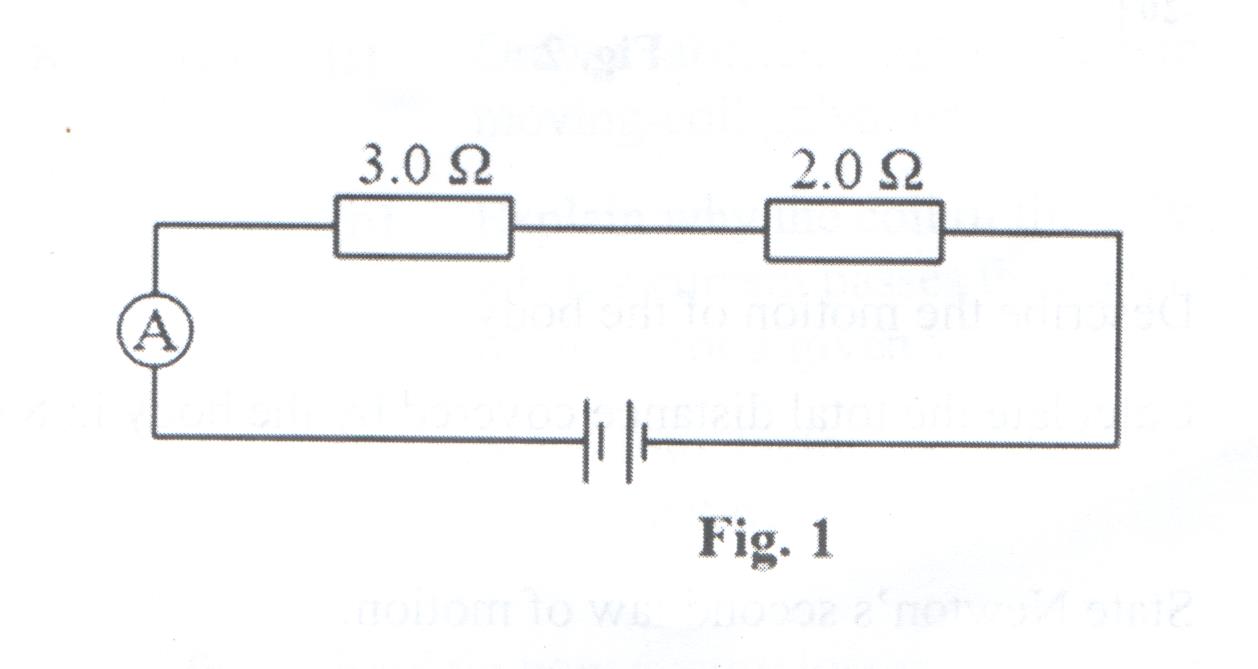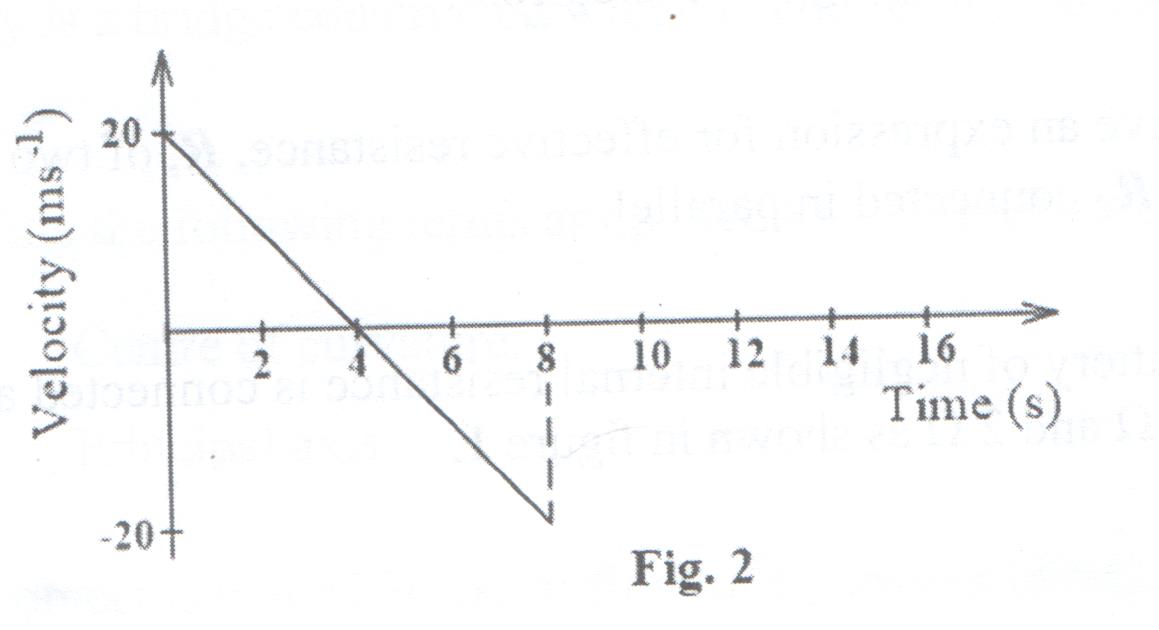1. a) What is a ductile material?
b) i) State Hooke’s law
ii) Describe an experiment to verify Hook’s law using a spring
iii) Give one application of Hooke’s law.
c) A force of 200N stretches a metal wire of cross-sectional area 0.001m2 and length 5m by 0.004m. Calculate the
i) strain produced
ii) stress on the wire
d) Why is a bridge constructed with one end resting on rollers?
2. a) Define the following terms as applied to concave mirrors:
- Centre of curvature
- Principal axis
b) An object is placed 36cm in front of a concave mirror of radius of curvature 24cm.
- Draw a scale ray diagram to show the image formation
- Find the magnification.
c) i) Explain why a small object at the bottom of a trough of water appears to be closer to the surface than it actually is.
ii) Describe an experiment to determine the refractive index of a glass block.
3. a) Define the following;
- Pressure
- Force
b) Describe a simple experiment to show that air in the atmosphere exerts pressure.
c) A simple barometer is raised from sea level to a height of 2.5km. Given that the average air density is 1.25kgm-3, density of mercury is 1.36 × 104kgm-3,find the new length of the mercury column in the barometer.
d) i) State any three applications of atmospheric pressure.
ii) Why is a liquid used as the fluid in hydraulic machines instead of a gas?
4 a) With the aid of a diagram, describe an experiment to measure the internal residence of a cell.
b) i) Define a joule
ii) Explain what is experienced by a person sitting near a large coil carrying electric current.
c) Derive an expression for effective resistance for effective resistance, R, of two resistors R1 and R2 connected in parallel.
d) A battery of negligible internal resistance is connected across resistors of 3Ω and 2 Ω as shown in figure 1.

Find the reading on the ammeter.
5. a) What is meant by sound waves?
b) Describe with aid of a labeled diagram how a sound wave is transmitted from a ringing bell to the ear.
c) Name three types of electromagnetic waves and state their uses.
d) Find the wavelength of radio waves of frequency 1.0 × 108 Hz
e) Describe how communication between the earth and the moon is possible in spite of there being no atmosphere around the moon.
6a) Figure 2 shows a velocity-time graph for a body.

- Describe the motion of the body.
- Calculate the total distance covered by the body in 8s.
b ) i) State Newton’s second law of motion.
ii) A constant force of 0.25N is applied on a body of mass 125g. If the body accelerates uniformly, find its acceleration.
c) Describe briefly, how acceleration due to gravity can be determined using a small mass, a piece of thread, a stop clock, a meter rule, a clamp and a stand.
7. a) What are X-rays?
b) i) With the aid of a labeled diagram, describe how X-rays are produced in an X- ray tube.
ii) State one medical use and one industrial use of X-rays.
c) Define the following:
- Nuclear fission
- Nuclear fusion
d) A radioactive nuclide  decays by emission of two alpha particles. The resulting nuclide emits three beta particles resulting into a nuclide which emits gamma rays.
decays by emission of two alpha particles. The resulting nuclide emits three beta particles resulting into a nuclide which emits gamma rays.
Determine the atomic mass and the number of protons of Y and write a balance equation for the decay.
e) i) What is meant by half-life of a radioactive substance.
ii) The half-life of Radium is 1620 years. How long will it take 16g of Radium to decay to 2g?
8. a) i) Draw a labeled diagram showing the essential features of the moving-coil galvanometer.
ii) Explain why the coil of the galvanometer rotates about its axis when a current passes through it, and why it settles in a definite position for a given value of current.
iii)State four factors on which the deflection of the coil of the instrument depends.
b) Explain how energy loses in an a.c transformer are minimized.
c) An a.c transformer has 200 turns on the primary coil. If 240V is to be stepped up to 720V, calculate the number of turns on the secondary coil.
d) Explain why thick electric cables are used for power transmission.
